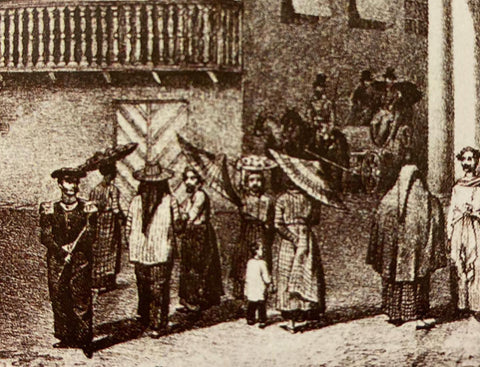Aleksandr Filippovich Postels was an artist, naturalist and mineralogist of Baltic German descent and Russian citizenship. He was chosen as one of the Russian artists to serve on a three-year scientific expedition around the world.
The voyage started in 1826, and it was commissioned by Russian Czar Nicolas I and commanded by Count Fedor Petrovich Lütke.

The illustration above is a Postels piece from this voyage titled Rue à Manila, Capitale de L’île Luçon (Iles Philippines) [A Street in Manila, Capital of the Island of Luzon (Philippine Islands)]. It was published in Paris, France in 1835.
The description that accompanied this illustration described Manila as one of the most attractive places on Earth where many people from around the world wanted to come and settle in. It was a busy and bustling city with the beauty of nature not far away.
The scene depicted here shows a main street in Manila in front of some government buildings where people of various nationalities and classes walk, work or socialize.

The second image above is a closeup of a group of people on the left side of the piece. A man in a striped Barong Tagalog, striped pants and western hat and a boy in either barong or camisa de chino are surrounded by women in baro’t saya (blouse and skirt) carrying umbrellas while a Spanish officer in uniform surveys the area on the left. A person of the clergy stands to the right with a foreign visitor.

The third image above is a closeup of the center of the illustration. In the foreground on the left, a male vendor in barong or camisa de chino, cropped work pants and western style hat carries his wares on his shoulder. Towards his right are seated women in baro’t saya and a boy in a camisa de chino and knickers. On the right towards the background is another clergyman speaking with a man in a striped barong, striped pants and western hat. The man walking on the right with his arms folded is dressed similarly in a barong.
